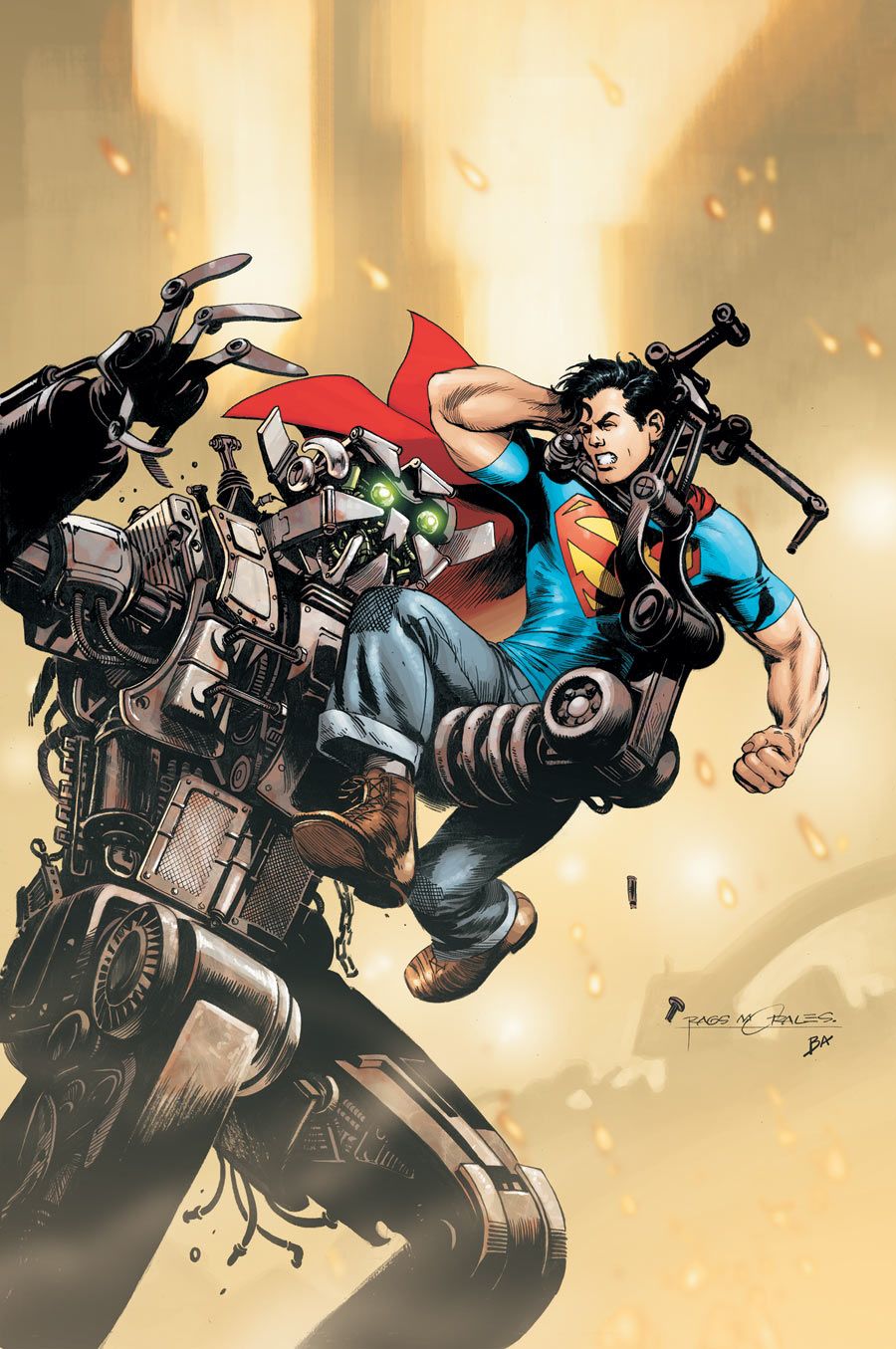For the first time since its relaunch, "Action Comics" doesn't read as though propelled forward by creative energy and a strange sort of madness. The first three issues all had a spark to them that drove them forward and, though this fourth issue continues the story they began, there's something missing. On the surface, everything seems the same and, yet, there's a feeling that this issue is merely a means to an end.
The invasion of the 'Collectors' began last issue and, here, Superman takes an active role in trying to protect Earth. However, all of the fights that occur lack an essential drama. It's Superman fighting against the inevitable end of the issue where things look doomed and the young hero needs to reach beyond his limits to save the day in the next issue or two. For now, the invasion happens and it reads like stalling for time, like what happens in this issue is necessary to the plot but not terribly interesting to Grant Morrison. If these events didn't happen, there would be a noticeable absence in the story; that doesn't mean that they're the most entertaining events to read (or write).
Where the issue shows some spark of life are in the small moments, like Lex Luthor's running commentary of betrayal or a panel where the owner of a factory realizes how he's enabled the invasion. Lois realizing that John Corben, given technological enhancements by the military, is the Voice of the Colony and trying to break through the control of the invaders is the most compelling dramatic moment of the issue. In comparison, the fighting seems blase and ho-hum. Like previous issues, the focus on the characters makes this comic better than those around it. This issue is so plot-centric, though, that the characters are lost too much of the time.
Rags Morales' art functions in much the same way: when he's given a chance to focus in on a character and really deliver a strong emotional moment, his art shines. When he's called on to deliver some pat action, his art looks like refined, less cohesive and polished. He does his best work on Corben/Voice, depicting him as a terrifying merger of man and machine, with Brad Anderson adding a green glow that enhances the image.
The back-up story spotlighting Steel fills in a gap in the main story, showing the resolution of the Steel/Voice fight, and could have almost been inserted between two pages of Morrison and Morales. Not many back-up stories support the main story like this. Usually, back-up stories are optional at best, unnecessary at worst; this is neither. Sholly Fisch introduces us to this version of John Henry Irons and shows that he's very much not just a guy in a cool suit, he's the sort of genius who built the suit, and keeps on using his brains. Brad Walker's art is attractive and surpasses a lot of the art in the main story.
In the end, "Action Comics" #4 is necessary to the story that Grant Morrison is telling, but that doesn't make it as lively or energetic as the first three issues. The action is determined by an external force rather than the characters themselves, and that sucks a lot of the drive out of the issue. Things happen because they happen and Morrison doesn't seem to find that any more interesting than we do. Hopefully, this issue is just a hiccup in an otherwise strong run.

